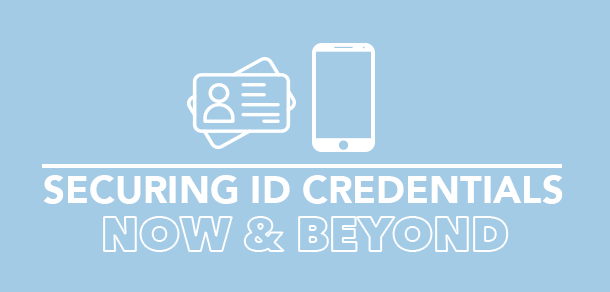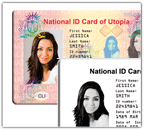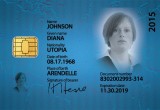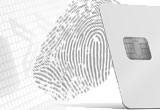Multiple modes of personalization key to deterring ID fraud
Embedded visual and covert security features make card counterfeiting harder and more expensive
21 August, 2019
category: Biometrics, Corporate, Digital ID, Government
When it comes to creating a secure credential, there is no single piece of technology that will stand in a criminal’s way. Driven by powerful economics, overseas counterfeiters have been able to keep pace with even the most sophisticated security features.
The strategy for outpacing the fraudsters is now shifting. Instead of finding the one “killer feature,” secure ID issuers are incorporating numerous modes of personalization to make simulating their credentials as frustrating, and as expensive, as possible.

Card materials don’t make a card secure, smart design does.
The challenge is driven by a combination of demographics and economics. In the US, there are about 20 million people in the potential market for fake IDs — mainly underage individuals looking to enter clubs or purchase alcohol. That has created an estimated $200 million market for counterfeit credentials, and the business goes to counterfeiters that create fakes as true to original specifications as possible.
To illustrate the problem, in 2018 New York Governor Andrew Cuomo’s office announced the seizure of nearly 900 fake IDs and issued nearly 1,000 citations for using false identification. And, that is just those who were caught in one year, in one state.
Extrapolating those figures nationwide shows the scope of the problem.
“The name of the game used to be outpacing small-time counterfeiters who focused on altering legitimate documents or who made simulations that were ‘good enough,’” says Roland Fournier, Senior Director Product Management at IDEMIA.
In the last 10 years, however, the market has shifted to large-scale overseas counterfeiters using sophisticated equipment with capabilities to simulate many security features available today.
In the US, there are about 20 million people in the potential market for fake IDs, which creates an estimated $200 million market for counterfeit credentials.
In some cases, the counterfeiters are legitimate secure ID printing operations by day and counterfeiters by night. “Operating in countries where they are not prosecuted by local law enforcement, counterfeiters don’t see a distinction between the two product lines but simply view them both as part of the business,” explains Fournier.
Because these organizations are so well-funded, no single technological hurdle can make a card fraud proof.
Fighting fraud by layering security features
“If issuers and suppliers had unlimited budgets, it would be easier to stay ahead of the criminals,” says Fournier. “But we have to be competitive, and our customers have to maintain a reasonable issuance price.”
Still, current budgets have enabled significant advancements in security via the layering of multiple security features into a single credential. Suffice to say, a simplistic surface-printed credential that requires an over laminate to protect the personalization no longer cuts it. Slapping on a basic hologram doesn’t get you there either. And, PVC composite card substrates have become the low-hanging fruit for the criminals.
“If we simply issue a credential with single surface printing or even single-mode laser engraving, it is very easy to fake,” Fournier says. “The bar is still not raised significantly enough to secure the credential for our customers.”
Secure cards now need to include multiple personalization modes, including security features such as laser engraving, digital color, full-color digital ultraviolet, encrypted watermarking, variable laser perforation, tactile laser and laser ablation.
A solid-body card with multiple personalization options — where all personalized data is buried inside the body of the card rather than printed on the surface — is now the standard. This prevents a fraudster from “breaking in” and tampering with the data, and it also makes the simulation of the credential exponentially more difficult and costly.
“It is all about creating a disincentive for counterfeiters, who in the end, are operating a for-profit business meeting the demand for a product,” states Fournier.
Level 1 and Level 2 security features virtual necessities
The key is to put data on the card using several modalities — for example, using digital color printing for the portrait with laser engraving to reinforce the image alongside variable UV printing for secondary images and data. “Selecting card substrates and constructions that allow the vendor to put multiple security technologies in a card should be the goal,” explains Fournier.
One key is to mix the Level 1 document security features that can be identified by visual inspection along with Level 2 features that require a tool to reveal. This is essential for ID authentication in the field as well as for challenging counterfeiters.
Issuers can opt for dyes and pigments that are not readily available to the counterfeit industry, or they can invest in more sophisticated color changing inks that visually alter when viewed at different angles.

Roland Fournier, Senior Director Product Management, IDEMIA
There are a host of security printing techniques and document security technologies that can make cards far more difficult and costly to simulate. The key is for issuers to work hand-in-hand with their vendor to select a unique combination that meets specific program goals.
The card issuance model also factors into security of the credential. Card personalization in a central issuance factory environment allows multiple advanced personalized methods to be deployed on a given card.
“We in the vendor community need to advise and inform customers about the best practices to follow,” Fournier says. “As long as it is lucrative, counterfeiters will always be there. We advise our DMV customers to take advantage of multi-modal card security to create credentials that are difficult and costly to fake.”




